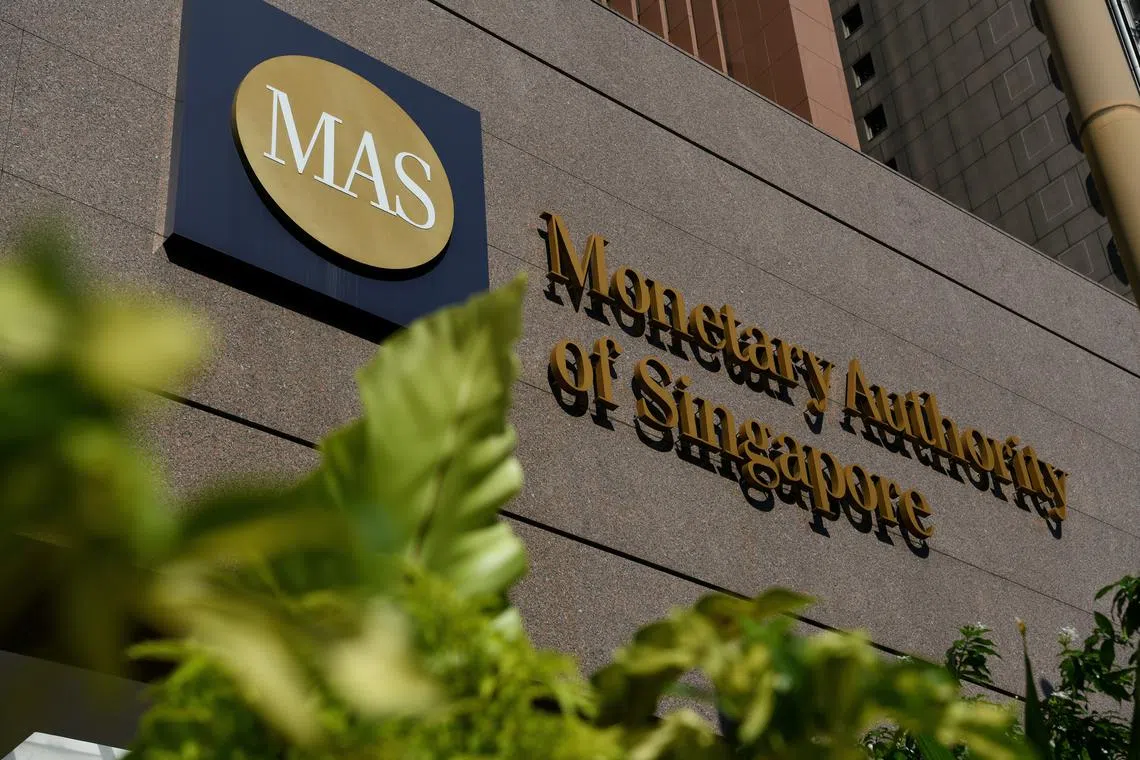Singapore’s central bank sees growth and hiring rising as inflation eases into 2025
Sign up now: Get ST's newsletters delivered to your inbox

MAS warned that the outlook for Singapore’s growth and inflation are at risk from a possible escalation in geopolitical and trade tensions.
PHOTO: ST FILE
Follow topic:
SINGAPORE - Companies in Singapore are expected to increase their output for the rest of 2024 and in 2025 on the back of improving global economic conditions, which will boost corporate finances and hiring capacity over the period, said the Republic’s central bank.
That is expected to support the Singapore economy for 2024,
The economy will grow at a similar pace in 2025, added the report, which was released on Oct 28.
Lower import prices and slower domestic wage growth will pull inflation down to within a range of 1.5 per cent to 2.5 per cent on average in 2025, significantly lower than the peaks seen over the past two years.
“Hiring should be supported in the coming quarters as wage growth moderates and employers see profitability and business prospects improve,” MAS said.
“The firming economic activity should thus provide some impetus to labour demand and put a floor to any weakness in the labour market.”
MAS noted that a Department of Statistics business expectations survey for the services sector already shows an uptick in employment expansion plans for the third quarter of 2024, driven by tourism-related companies.
The employment outlook by workforce solutions company Manpower Group also indicates that labour demand could strengthen further by the end of this year, led by stronger hiring in the financial services and information and communications sectors.
The Singapore economy strengthened decisively in the third quarter of 2024 following lacklustre performance in the first half of the year.
“The strong performance was underpinned by a broadening recovery in the manufacturing sector, especially for electronics, increased trading activity in the financial sector, and the return of Chinese tourists.
“Overall, the Singapore economy gained a firmer footing, with close to 60 per cent of the economy exceeding or at pre-pandemic growth norms,” MAS said.
Local consumer demand and increased tourist arrivals to Singapore will continue to support businesses in the services sector, especially those that provide food, beverages and lodging.
The local information and communications sector could also benefit as domestic firms ramp up their digitalisation plans, MAS said.
Major central banks are likely to also continue cutting their key interest rates in 2025, and this will support Singapore’s financial sector growth.
But MAS warned that the outlook for Singapore’s growth and inflation is at risk from a possible escalation in geopolitical and trade tensions, which could impact local hiring.
There could also be a reversal in the global technology sector recovery.
To sustain the strong uptick in overall economic growth seen in the third quarter, the manufacturing sector will need global demand for its goods, which include semiconductors and other electronic components, to persist through 2025.
But if the new US president after the Nov 5 election favours a big increase in tariffs on China and other trade partners, import prices may rise and demand for electronics may suffer worldwide.
MAS said: “The outcome of the upcoming US presidential election, an escalation in geopolitical tensions including in the Middle East, or a sharper slowdown in China could adversely affect global trade and growth, and, in turn, weigh on Singapore’s economic prospects.”
Still, the central bank noted that since the onset of the US-China trade war in 2018, Asia has retained its centricity in the global electronics value chain, with the Asean region gaining prominence.
The MAS report showed that as at 2023, Asia accounted for around 70 per cent of global electronics exports, broadly unchanged since 2015. Asean’s share of global electronics exports has increased by 5 percentage points, to 18 per cent, over the same period.
MAS said: “Asean countries have gained from the diversion of electronics trade between the US and China through increased direct investment inflows, which have built up their production and export capabilities.
“The region can continue to benefit by specialising in different parts of the value chain, with Singapore leveraging its comparative advantage in producing upstream and midstream electronics components and providing supporting intermediation services to trade.”
The central bank added that while growth in the US and China might moderate in 2025, improved prospects in the euro zone and several Asean economies should provide some countervailing support.


